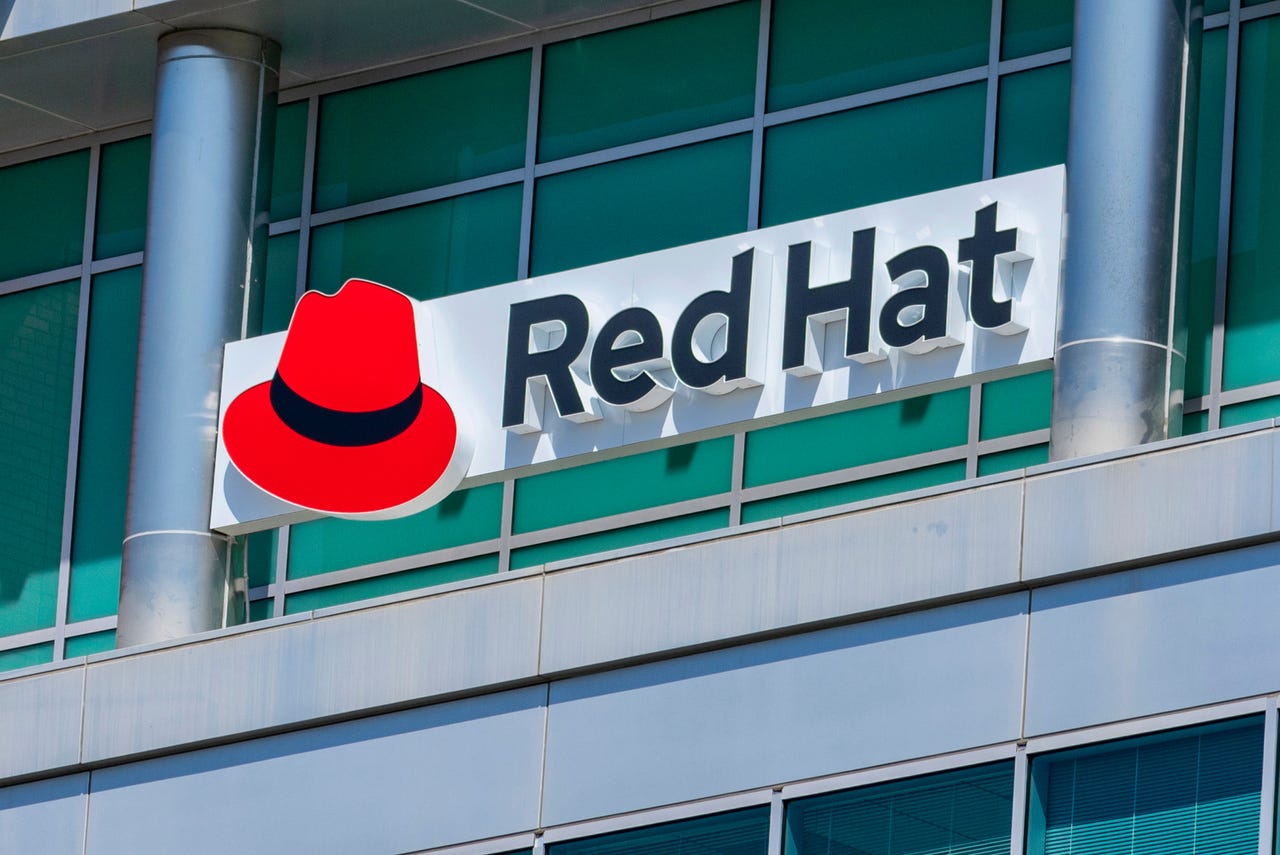































 Shutterstock
Shutterstock If you want a business-ready version of Linux, chances are Red Hat's latest Red Hat Enterprise Linux (RHEL) 9.2 or the forthcoming RHEL 8.8 is likely on your shortlist.
These fresh releases bolster Red Hat's commitment to simplifying intricate Linux platform tasks across the hybrid cloud landscape, from your server room to data centers and onto public clouds and the edge. With either distro, RHEL users can expect to get a more secure and easier-to-use server operating system.
Also: How to choose the right Linux desktop distribution for you
Both releases simplify how organizations manage security and compliance with a realmd RHEL system role. This approach enables admins to automate integrating RHEL systems with Microsoft Active Directory (AD). In addition, 9.2 provides a Security Content Automation Protocol (SCAP) profile and Ansible DevOps content for enhanced system checks and hardening that align with Center for Internet Security (CIS) benchmarks.
The improved web console in the distros includes the ability to automatically configure encrypted disk unlocking on root filesystems using network-bound disk encryption (NBDE), which helps protect data at rest. It was possible to do this in the past, but frankly, it wasn't easy. Admins can also use the web console to select frequently used combinations of system-wide crypto policies.
Also: The best Linux laptops
Red Hat has also added new Ansible system roles to simplify administration. These are:
The new Podman RHEL system role enables you to automate the deployment of containers in their environment to save time and improve consistency.
The up-to-date journald RHEL system role lets you automate the configuration of the systemd journal on RHEL, including the ability to configure a persistent systemd journal.
The new ad_integration RHEL system role helps users automate the process of directly integrating RHEL systems with AD.
Several RHEL system roles -- including metrics, nbde_server, vpn, microsoft.sql.server, ha_cluster, logging, postfix, and cockpit -- can now optionally call the firewall and/or Security-Enhanced Linux (SELinux) system roles to open a port and configure port labeling automatically.
The ha_cluster, logging, Microsoft SQL Server, and Cockpit RHEL system roles can now call the certificate system role to create a corresponding certificate.
The microsoft.sql.server RHEL system role now provides operational efficiencies, fortifications for disaster recoveries, and support for the newest Microsoft SQL Server release.
As usual, the new distros include the latest languages, databases, and toolkits for developers. These include Python 3.11, PostgreSQL 15, Performance Co-Pilot (PCP), Grafana data visualization platform, with updates to Rust v1.66, Go v1.19, and LLVM v15 toolsets.
RHEL also provides operational consistency across the hybrid cloud through image builder. This tool enables you to create "gold" standardized operating system images that can be optimized for all different platforms. The newly revised web console also makes it easier to set IT security and compliance policy enforcement through its user-friendly browser interface.
In addition, image builder supports the creation and sharing of RHEL blueprints. These blueprints provide a framework for specific and standardized operating system images, which the image builder can then consume as a specification. With these specifications, admins can standardize internal image standardization, even for disconnected or air-gapped Linux systems.
Also: RHEL and its Linux relatives and rivals: How to choose
The new RHELs also enable Podman, which is an open-source tool for developing, managing, and running containers on Linux system, to maintain containers at increasing scale. This approach includes the ability to track container creation events and support custom container health checks.
On the hardware side, the new RHEL versions have added support for 64K page sizes for ARM architecture. This support broadens the range of ARM-based, certified hardware for customers.
Red Hat has also introduced two new lifecycle management options for supported enterprise Linux, the Enhanced Extended Update Support and the RHEL 7 Extended Lifecycle Support (ELS). The former is for RHEL 9.x and later. It provides software updates for up to four years after a minor update's general availability.
The latter, for RHEL 7.9, offers support after the 10-year RHEL 7 lifecycle ends. This extended lifecycle period runs from July 1, 2024, through June 30, 2026. While Red Hat wants its older RHEL users to upgrade to RHEL 8 or 9, they know users can be quite stubborn about shifting their operating systems.
Also: How to install Ubuntu Linux (It's easy!)
Tech analyst IDC reports Linux operating system environments are projected to grow from 78% in 2021 to 82% in 2026 across the hybrid cloud. It seems Red Hat and its rivals, AlmaLinux, Canonical Ubuntu Linux, Rocky Linux, and SUSE, will continue to do well no matter what the economy has in store for business.
 Tags chauds:
affaires
Logiciel d’entreprise
Tags chauds:
affaires
Logiciel d’entreprise